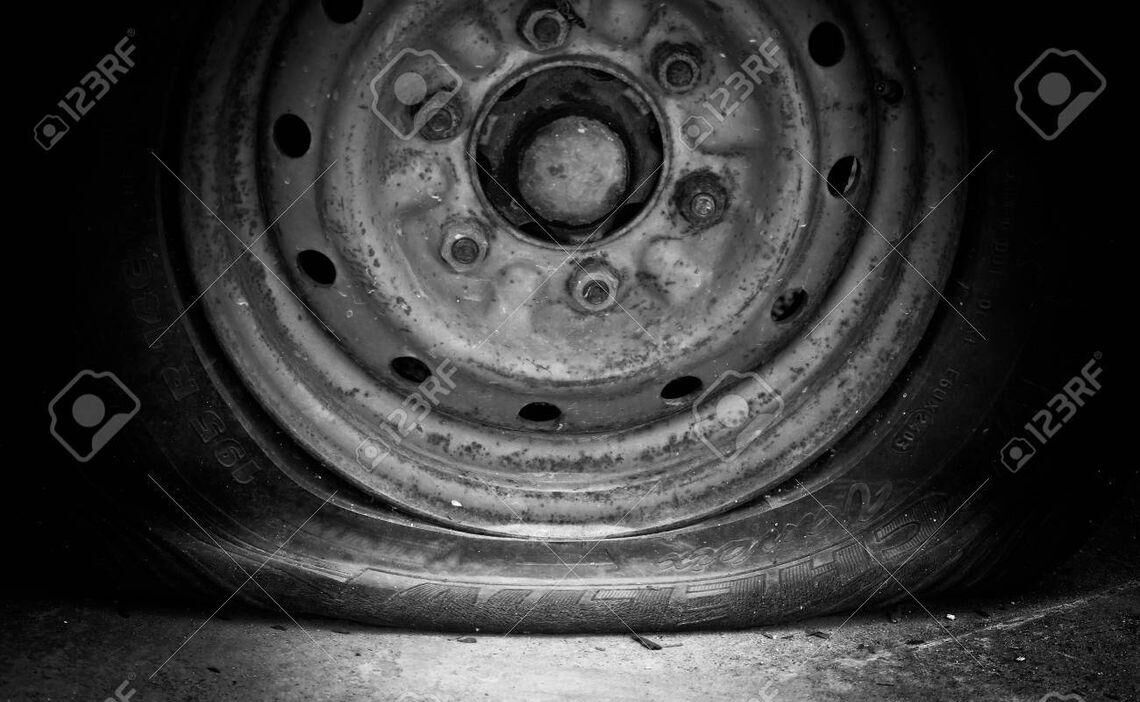How do I know if a tyre repair is possible?
The first thing to know is that it depends on where the tyre is punctured.
In the tread area :
The tyre is repairable in most cases. Unless the puncture is too large, tyre repair is usually possible. However, it is important to remove the tyre to ensure that it is not marbled and/or damaged by driving at low pressure.
In the shoulder area :
A tyre puncture repair in this area is not possible. The tyre must be replaced.
In the sidewall :
he tyre is generally not repairable, there is a high risk that the puncture has damaged and weakened the overall structure.
There is one exception:
If the speed rating on the sidewall of your tyre does not exceed the T rating, the sidewall is repairable if the hole is 3mm or less in diameter. Beyond this index, tyre repair is strongly disadvised to avoid any safety risk.
In what case a tyre puncture in the tread area is not repairable?

When a tyre puncture occurs, there is a more or less long run-flat phase until the vehicle comes to a complete stop. When driving with a flat tyre or with low pressure, the tyre can suffer damage to the overall structure (mottling, chattering, tyre dislocation).
How does it work?
When you drive at low pressure or with a flat tyre, the sidewall crushes.
This causes deterioration in the overall structure of the tyre which can lead to several problems:
- Mottling of the tyre : the tyre is marked on the inside after being crushed due to lack of air (low pressure).
- Chattering of the inner rubber : pieces of rubber heat up and break off.
- Dislocation of the tyre leading to its bursting.
If the carcass has been damaged, your tyre is too weak and cannot be repaired, even if the puncture was in the tread.
Tyre repair: 3 methods
There are three ways to repair a tyre:
- With a PRP, also known as a "mushroom": this tyre repair, carried out by the professional, is the most qualitative. He dismantles the tyre, examines the inside to check for damage, taps the hole, inserts the PRP from the inside and glues it in place so as to obtain a complete seal.
- With a wick: it is inserted into the tyre from the outside. This type of tyre repair is strongly disadvised because it does not involve a check of the inside of the tyre after a low pressure or flat tyre ride and assessing any damage that may have occurred.
- With a patch: this is a similar process to that used to repair a bicycle inner tube. This type of repair is also not recommended because it will seal on the inside, but not between the tread and the inner rubber. There will therefore be a risk of water infiltration and oxidation of the (partly metallic) layers. If this damage occurs, it can lead to the tyre bursting.
Tyre repair kit: can it effectively repair a tyre?
A tyre repair kit generally consists of a puncture repair spray that fills a hole by injecting foam into the tyre, or a drill to fill the hole from the outside.
Michelin does not recommend repairing your tyre permanently with these methods because no check of the inside of the tyre will have been made, which may expose you to the risks mentioned above.
In the event of a tyre puncture, it is also advisable to change the wheel and then take the punctured tyre to a professional for examination.
If you do not have a spare tyre or if it is not usable, call a breakdown mechanic to take your vehicle to the nearest garage.
If neither is possible, then use your tyre repair kit as a last resort. This type of repair can only be temporary so that you can drive to the nearest garage where the professional will then
Tyre repair by a professional
Effective tyre repair is a technical operation, and professionals are trained to do it. They know how to examine the inside of the tyre and determine whether it is repairable.
A "mushroom" is inserted into the hole from the inside out.
Then the protruding part is cut off. The hole is filled in and the seal is optimal.
Is it safe to repair a punctured tyre?
Tyres can sometimes be driven at high speeds. That is why it is important that the tyre is repaired properly to ensure your safety.
A tyre repair is only safe if it is carried out properly, which is why it is important to have it done by a professional. If the tyre is found to be repairable after examination, the professional will fit the correct bead to the hole and give you a tyre that performs as well as it did before the puncture.
If the tyre has not been damaged by running flat, its life span will be exactly the same as if the tyre had not been punctured.
Can all types of tyres be repaired?
Some tyres have been designed for specific needs. They have specific features that may raise the question of their reparability. There are three types:
1 - Acoustic tyres :
They contain a special foam that reduces the noise of the tyre when it is running. This type of tyre can be repaired in the same way as a standard tyre.
2 - Self-seal tyres :
These tyres are self-repairing only in the tread area. In the event of a puncture, a self-obstructing rubber plugs the hole. This type of tyre can be repaired in the same way as a standard tyre. If self-seal tyres are available in the dimensions specified by the manufacturer for your vehicle, you can choose to fit them.
3 - Runflat tyres:
These tyres make it possible to continue driving to the nearest garage after a puncture without damaging the inside of the tyre. At Michelin, runflat tyres are marked ZP (Zero Pressure) and/or EMT (Extended Mobility Tyres). Runflat tyres can be repaired once.
Please note that runflat tyres are mounted on a specific rim adapted to a certain category of vehicle. They cannot be mounted on a normal rim.




